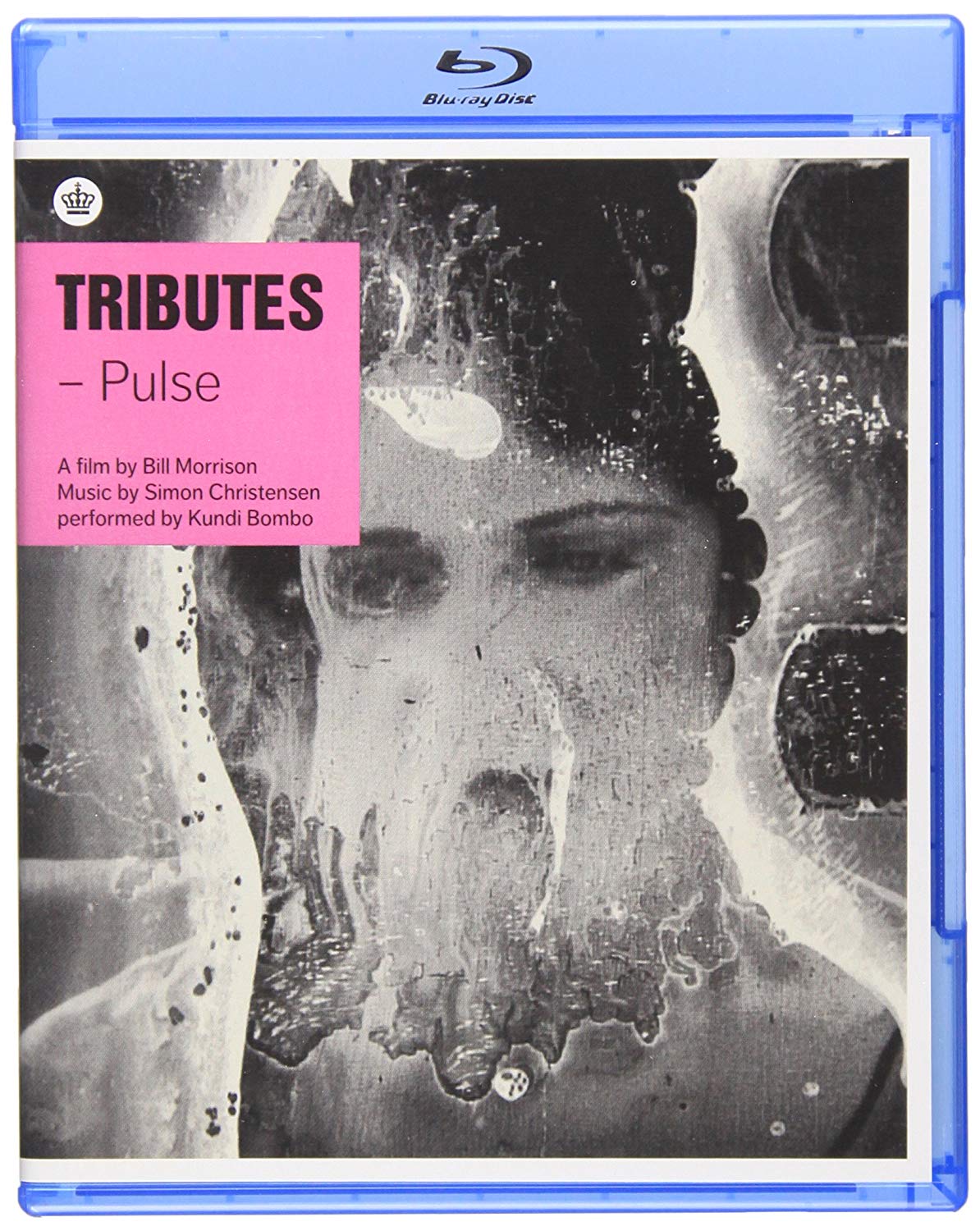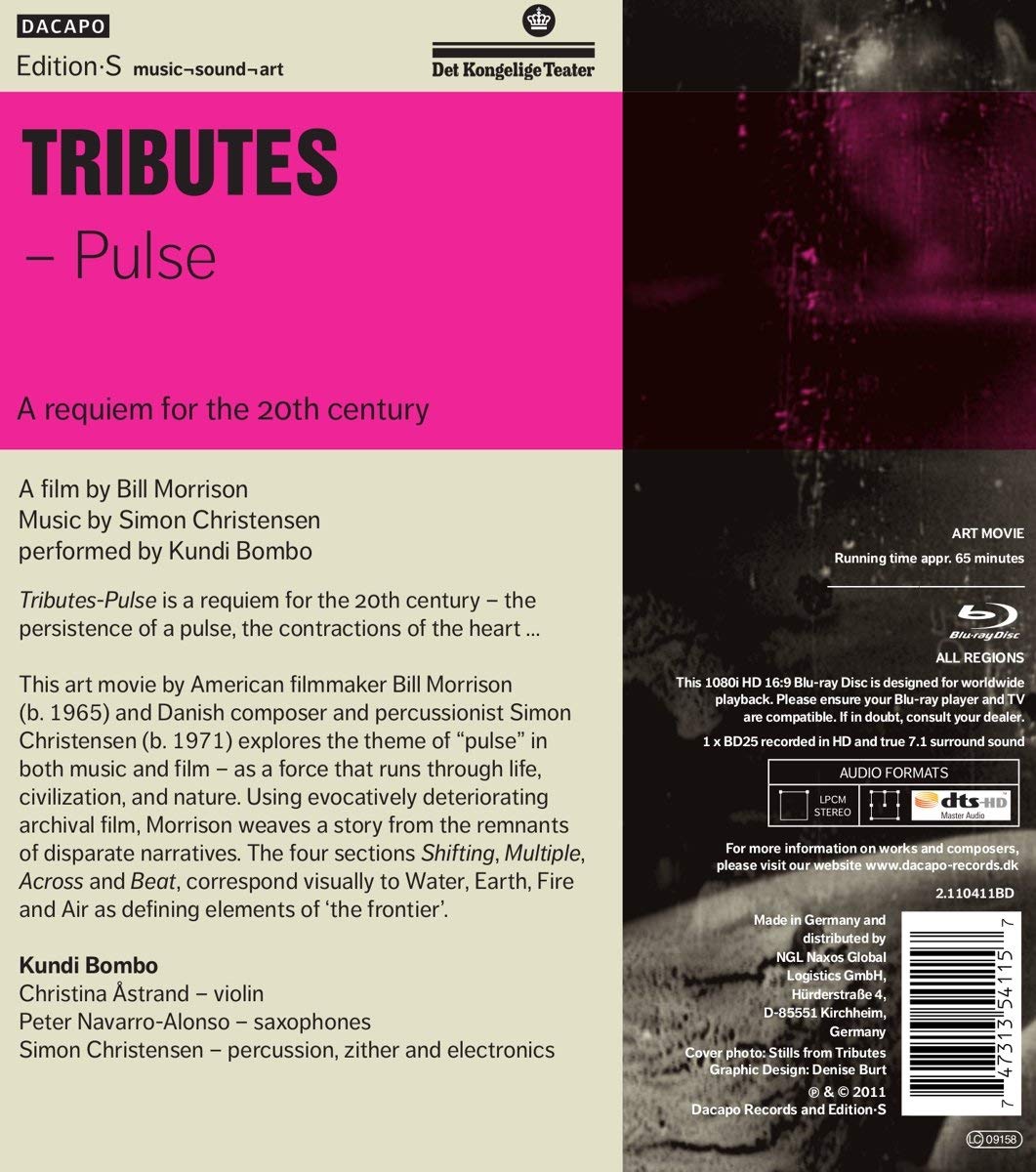

Tributes - Pulse motion picture, a "requiem for the 20th century." Bill Morrison, New York based, made the video. He uses black and white images of decomposing nitrate film which he alters as original art and a sobering segment he photographed himself with crude SD gear (from a helicopter) of a Staten Island salvage yard for decommissioned tugboats and ferries. Simon Christensen wrote the music. It's performed by a group called Kundi Bombo. This band has three members: Christina Åstrand playing violin; Peter Navarro-Alonso playing soprano, alto, tenor, and baritone saxophones; and Christensen himself on percussion, zither, and electronics. There is no text for this movie. There is a dense, abstruse keepcase booklet in English only. Released 2011, disc has 7.1 dts-HD Master Audio sound. Grade: B
I had a hard time deciding whether to cover this title on HDVDArts. The music is cutting-edge contemporary classical art. But we don't cover Blu-ray audio discs on our website when there is no substantial HD video as well. Now this entire disc has original video, but it's all based on old photos or SD video and it's not even in widescreen format. So this didn't seem to fit in with the opera, ballet, and symphony concerts we usually cover. Then it finally dawned on me. Most of the titles on HDVDArts are just (vastly) better versions of what we had before. But Tributes - Pulse is an avant-garde work that would probably be unwatchable for home theater use but for Blu-ray presentation quality. In that sense, Tributes - Pulse is a new kind of art form and is—whether it's good or bad—in a sense more original and creative than anything else we cover.
Tributes - Pulse is dedicated as a tribute to four 20th century composers: Charles Ives, Conlon Nancarrow, Steve Reich, and Trent Reznor. The film is divided into four segments. This suggests that maybe each segment is associated with a particular composer. Well, after some effort I conclude that's not the case, and nothing in the keepcase booklet discusses this.
The key to understanding this video is it's subtitle: a "requiem for the 20th century." A better title might have been "a requiem for our time." The video starts out with a lot of images of buffaloes. Dealing with the buffaloes was a 19th century topic. In any event, it's not too hard to see the main themes of the video: frontier, industry, war, and decay. The 20th century (or "our time") is over, and we need now to move onto something new and better.
All aspects of disc authorship and production are excellent. The original music is challenging, but basically quite pleasant. Earlier my son and I listened to this on decent but basic loudspeakers. We recently reviewed this again with better speakers in the home theater, and the difference was startlingly large. So to hear the music well, you need good gear. Most of the video involves altering photos. This is a fairly popular contemporary art technique; see, for example, our recent review of Gerhard Richter Painting.
Now that we are using screenshots, we can give you a much better idea what this title is like. The film opens with about 6 minutes of a great many altered black and white photos which turn out looking something like this:
By the way, the black borders on the sides, the top, and the bottom actually show on the widescreen, so we have not tried to crop the images.
Most of the film continues with black and white "sepia" photos that are then altered in a less radical fashion than the pure black and white photos above. Let's start with buffaloes:
The final section of the film suddenly shifts to aerial SD video of a boat graveyard. The images make a big impact as supported by grim music. I think Morrison deliberately used primitive equipment to photograph this; the roughness of the images heightens the viewer's feeling of desolation:
Now for our summary: I acknowledge the hard work and artistry that went into making this movie. The still screenshots only hint at the emotional impact of the video with it’s music. I understand that Bill Morrison is trying to urge us to do better in the 21st century than we did before. I originally gave this a lower grade; but I now up the grade to B.
OR










